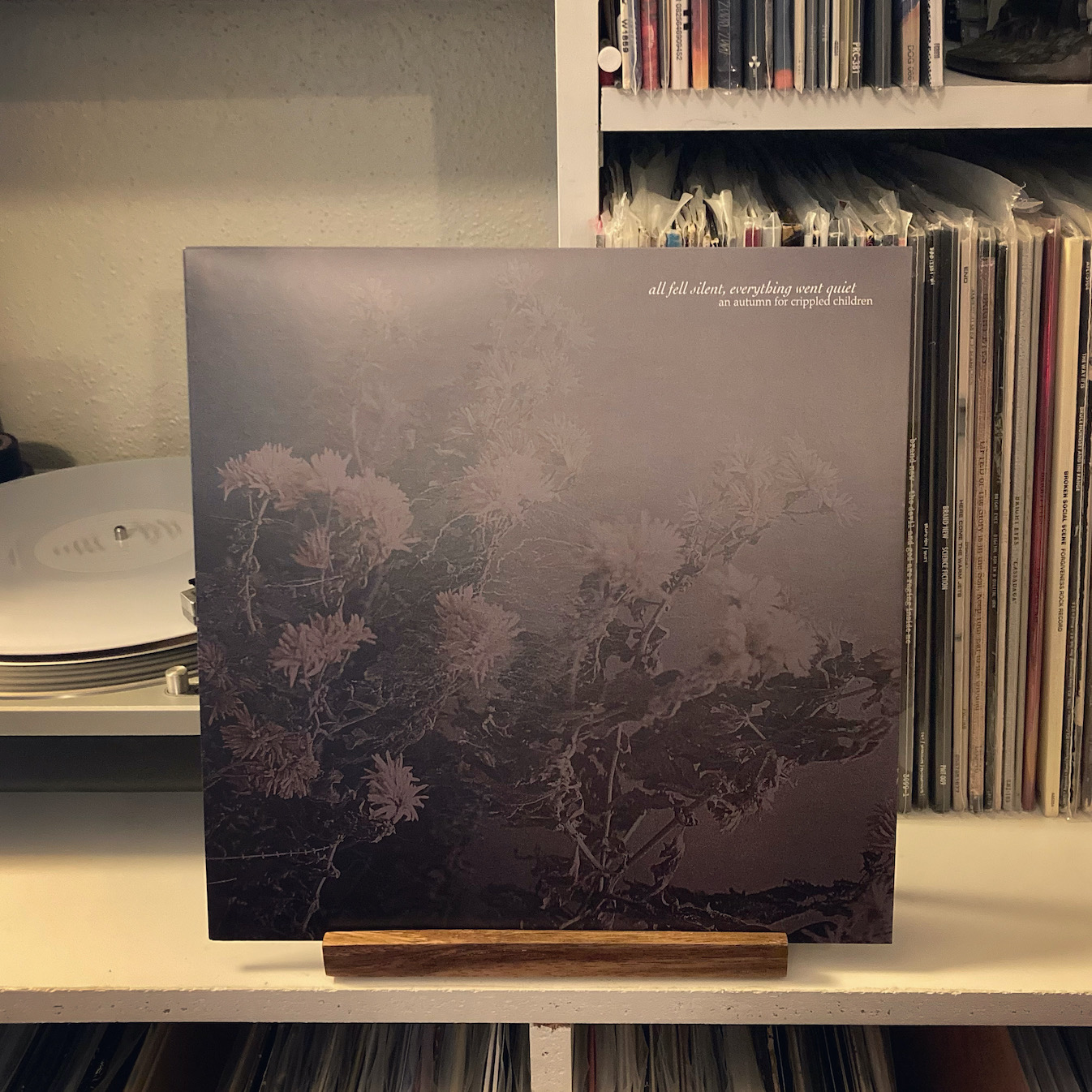 Last year, I said that An Autumn for Crippled Children’s Try Not to Destroy Everything You Love should have stolen them the title of “The Cure of Heavy Metal” from post metallurgists A Year of No Light. That album’s heavy use of moody synths, drum machines, and melodramatic grand pianos betrayed a great love for the Goth Rock legends that mixed surprisingly well with the blistering black metal guitars and shrieked vocals.
Last year, I said that An Autumn for Crippled Children’s Try Not to Destroy Everything You Love should have stolen them the title of “The Cure of Heavy Metal” from post metallurgists A Year of No Light. That album’s heavy use of moody synths, drum machines, and melodramatic grand pianos betrayed a great love for the Goth Rock legends that mixed surprisingly well with the blistering black metal guitars and shrieked vocals.
On last year’s All Fell Silent, Everything Went Quiet, AAFCC leaned even further into the goth, new wave, and post punk influence, making this sound almost like a Cure-worship album with added black metal elements, rather than the other way around. In either case, it certainly works.
I haven’t delved too deeply into AAFCC’s catalog outside of Try Not to Destroy… but as anyone who knows me knows, I have a deep love for all metal that reaches beyond the gutsy, gory aesthetic that much of metal has been confined within. This spells an incredibly tender soft spot for almost everything to bear the “blackgaze” label. An Autumn For Crippled Children certainly follows many of the subgenre’s conventions laid down by Alcest—shredded guitar distortion, shrieked vocals, and aggressive drums, are mixed with shoegaze walls of sound, major melodies, and cinematic dynamic shifts. However, AAFCC’s take is fresh enough to avoid sounding like another Deafheaven soundalike (not that I’d mind). High-on-the-neck bass melodies, palm-muted clean guitars, and billowing synths pay homage to tender 80s new wave and post punk, making this the only black metal that might possibly be used in a John Hughes movie soundtrack.
Granted, those sorts of aesthetic markers bring a fair amount of sentimentality that might elicit eye rolls from more cynical listeners. The press release for this album describes it as, “A ten-track chronology of the human condition that heaves under the weight of both distortion and emotion, condensed into majestic passages through a choir of multiple instruments and soaring vocals.” As gaggingly self-important and precious as that sounds, I’m not sure there’s a better description.
As astringent as the sonic palette can get (the vocals in particular never shift from an abrasive black metal banshee call), there’s something comforting about this album. It’s melodic even at its harshest moments, and the vocals are buried deep beneath the buzzing wall of sound of the keyboards and guitars, almost like a layer of static in the atmosphere than lead vocals. The overall mix further obscures any of the sharp edges, weaving everything together into the aural equivalent of a weighted blanket.
It’s not quite as lo-fi as the formless cave recordings of early black metal, but it’s definitely a little muddied—and intentionally so. Clarity in the production would have sharpened some of the edges in unflattering ways, much like how upscaling movies shot on film to 4KHD can spoil the cinematography.
The aesthetic choices here aren’t for everyone—metal purists and new wave fans alike will likely have similar knee jerk reactions to this disc (and the band’s output in general), coming from different directions. But as for me, this is exactly the sort of record that I would put on and let wash over me at the end of a long day. The higher volume the better.